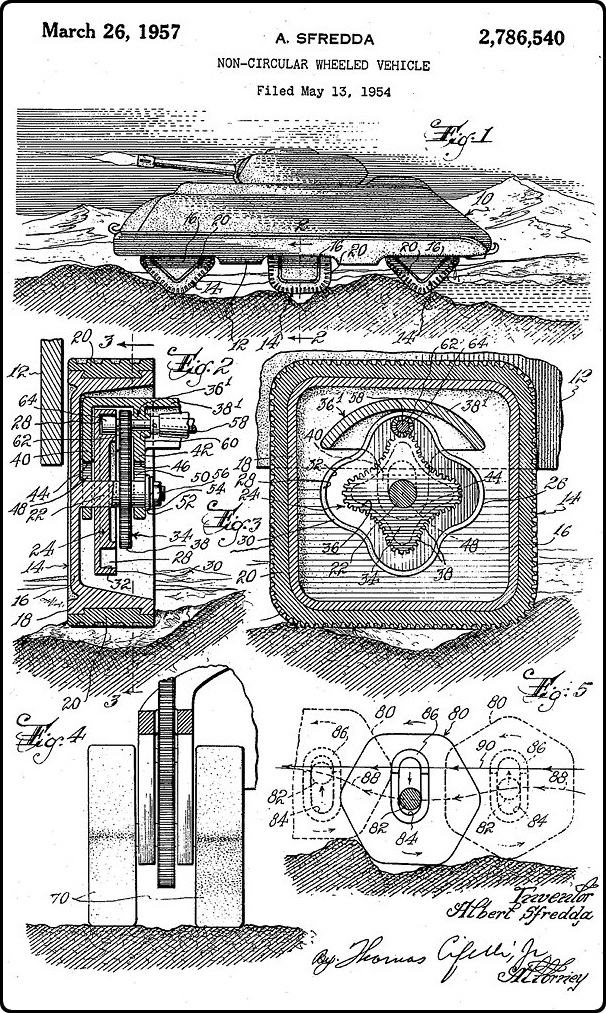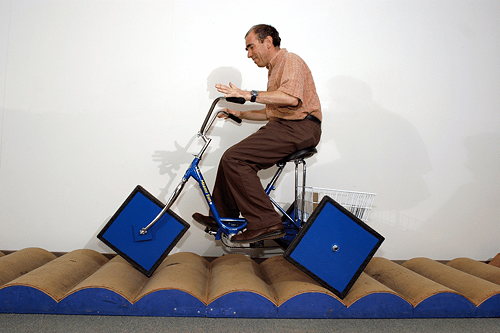Square-Wheeled Tank
In 1957, Albert Sfredda secured a patent (No. 2,786,540) for a square-wheeled tank. He explained:

Sfredda was correct that square wheels would provide better traction on rough terrain than circular wheels would. The video below explains why. But the problem, of course, was that his tank would have difficulty moving on a regular, flat road.
Along similar lines, Macalester College has had a square-wheeled bicycle on permanent display since 1997. More info: macalester.edu

A vehicle equipped with square wheels of the type contemplated by my invention gives better traction and a smoother ride when used on rough terrain than one having circular wheels. Following are the reasons: the sides of a square wheel constitute large flat surfaces for bridging ruts and cavities in the ground whereas a circular wheel follows the surface of the ground and enters many ruts; and the sides of a square wheel provide a large contacting area with the ground when they lie parallel thereto, and, hence, afford better pushing effect, whereas a round wheel affords only a small pushing area, which often results in causing a digging effect.

Sfredda was correct that square wheels would provide better traction on rough terrain than circular wheels would. The video below explains why. But the problem, of course, was that his tank would have difficulty moving on a regular, flat road.
Along similar lines, Macalester College has had a square-wheeled bicycle on permanent display since 1997. More info: macalester.edu

image source: StanWagon.com
Comments
Notice that a modern tracked vehicle takes along its surface and rolls its wheels on top of the surface to impart motion for the tank. In that manner there is a smoothing out across the surface along with traction.
A look at a modern Abrams tank will show what is involved - the upper speed of the tank across smooth surface is near or better than 50 M.P.H. and the speed across rougher / softer surfaces is very good. Much better than a purely wheeled vehicle which would probably bog down in soft soil / mud.
That squared off wheeled vehicle could require a more complex "differential" for corners and that is probably why it never found favor.
A look at a modern Abrams tank will show what is involved - the upper speed of the tank across smooth surface is near or better than 50 M.P.H. and the speed across rougher / softer surfaces is very good. Much better than a purely wheeled vehicle which would probably bog down in soft soil / mud.
That squared off wheeled vehicle could require a more complex "differential" for corners and that is probably why it never found favor.
Posted by KDP on 07/21/21 at 05:49 PM
Another problem: wouldn't this only work on terrain with the right size of roughness? If the humps in that bicycle track were twice or two-thirds the size, the thing would never move.
Posted by Richard Bos on 07/24/21 at 08:56 AM
Commenting is not available in this channel entry.

Category: Motor Vehicles | War | Weapons | Patents | 1950s